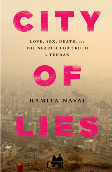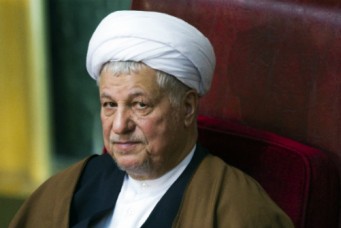City of Lies
A study of love, sex, and death in Tehran.
City of Lies: Love, Sex, Death, and the Search for Truth in Tehran. By Ramita Navai. PublicAffairs, New York, 2014. 320 pp.
In June 2009, before the Arab Spring uprisings, Iranians took to the streets to demand “Where is my vote?” When authorities declared incumbent President Mahmoud Ahmadinejad the winner, his leading rival, Mir Hossein Mousavi, cried foul. Mousavi’s supporters, donning the Islamic color green—a symbol of his candidacy—staged mass demonstrations not seen since Iran’s 1979 revolution. What initially were protests against what Mousavi and the public deemed to be a fraudulent election became a call for reform and greater civil liberties. The peaceful protests in the tens of thousands in major cities—at one point a million gathered in Tehran’s Azadi Square—were violently quelled by theBasij paramilitary units and the Komiteh. Thousands were beaten and hundreds were thrown in jail, with a death toll of seventy-two—including those who died in prison. Mousavi, his wife Zahra Rahnavard, and the election’s third runner up, Mehdi Karroubi, were put under house arrest.
Countless Iranians put their lives on the line for a man and his idea of “change.” Many believed him to be the man who could lead the reform of the political apparatus of the Islamic Republic, the movement of hope and change not seen since the era of reformist President Mohammad Khatami from 1997 to 2005. Yet Mousavi was a different figure when he served as prime minister in the 1980s during the war between Iran and Iraq.
In 1988, Ayatollah Ruhollah Khomeini’s regime executed thousands of Communists, Marxists, Mujahedeen Khalq, and other members of various political groups imprisoned in Evin, the country’s notorious political prison. As Ramita Navai recounts in City of Lies: Love, Sex, Death, and the Search for Truth in Tehran, around that time the parents of a young boy named Amir were arrested in Shiraz for dissident activities. For months, Amir and his grandfather searched for them. When they learned that Amir’s parents had been executed, Amir and his grandfather knocked on the door of every government official begging for the return of the bodies for a proper burial. Finally, according to Navai, a high-ranking government official told them the parents did wrong and dismissed them with a contemptuous look—the government official was the same man who would lead the peaceful protests two decades later. (Mousavi would deny any involvement in the 1988 massacre.)
Through stories like this, City of Lies shows us how in Iran not everything is how it may appear. In the first line of her preface the author explains, “Let’s get one thing straight: in order to live in Tehran you have to lie. Morals don’t come into it: lying in Tehran is about survival.” For her, lying is a mask worn to protect from judgment and to save face or keep abehroo, honor or reputation. It is not just in the evasive responses given to questioning from the morality police, but in the fabrications told to one’s neighbors, family, and friends. It’s sometimes to arouse envy, but mostly to keep appearances. Deceit is a natural instinct in order to survive: Tehran is the real jungle and you either eat, or become eaten by the system.
Mousavi may be an extreme case, but there are skeletons in most Iranians’ closets. Navai shares stories about societal problems that come as a shock for outsiders unfamiliar with post-1979 Iran. Some Iranian husbands, Navai writes, go to Thailand for sexual pleasure, while others pick up prostitutes and take them to summer villas in Iran by the Caspian Sea. Even the regime knows the people are discontent and complaining about societal issues; a billboard on the corner of Valiasr and Takht-e Tavous reads: “LET’S NOT SPEND SO MUCH TIME DISCUSSING SOCIETY’S PROBLEMS IN OUR HOMES.” Turning stereotypes on their heads, Navai has the reader empathizing with the prostitute-turned-home video porn star, or the closeted gay Basiji. They are heroes in their own right, Navai reveals; they struggle with the system, and survive.
Navai employs a neat structural device by finding many of her stories up and down Valiasr Street, the seemingly endless sycamore-lined boulevard, “the single road that sums up Tehran for all Tehranis, where Iranians come to celebrate, to protest, to march, to commemorate, to mourn.” In its depiction of Tehran’s dark and sometimes seedy underbelly, City of Lies often strays into material that delights in having shock value. There are no uplifting tales about the teenager who starts an animal shelter, or the foreigner who braved the 1979 revolution to remain in Tehran to teach her beloved students. Everyone likes a good story about sex, drugs, and lies. It’s all the more riveting if it is set in the Islamic Republic of Iran.
Holly Dagres is assistant editor of the Cairo Review of Global Affairs. She has written for Al Jazeera, Al-Monitor, Foreign Policy, Huffington Post, and the World Bank Blogs, among others. On Twitter: @hdagres.



